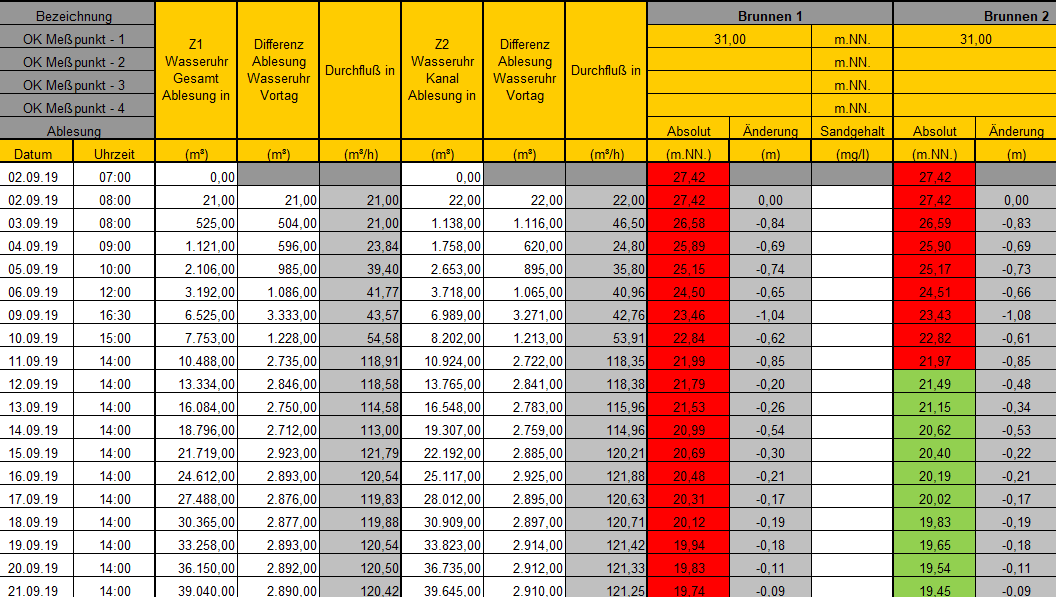Data logging refers to the process in which data is recorded and stored on a storage medium.
If sensor systems are extended with a data logger, measured values such as temperature, water level or pressure can be recorded and stored over a period of time. This data can then be analyzed at a later date. This provides important information about the temporal behavior of a system.

Water book
Water registers must be kept for bodies of water in accordance with Section 87 of the Water Resources Act (WHG).
The following points must be entered:
- Permits issued in accordance with the WHG
- Authorizations
- Old rights and old powers
- Planning approval decisions and planning approvals
- Water protection areas – risk areas
- Designated floodplains
In most federal states in Germany, the lower water authorities are responsible for keeping the water registers. One exception is North Rhine-Westphalia, where the district governments keep the respective water register.
Data logging enables the electronic management of a water logbook.
Water level data logger
Water level data loggers are particularly interesting in relation to pump control systems. For example, they record filling levels or temperatures at specified measuring times. Such data loggers are used for groundwater wells and in technical environments.
Targeted data logging provides information about the consumption and performance of the technology, but can also provide information about the general environment of streams, rivers or lakes. Last but not least, data loggers in combination with fill level sensors provide the basis for the billing of consumables.
Multi-channel data logger
Multi-channel data loggers open up numerous application possibilities. They record the data from several measuring points at a central location and can store them. In addition, a multi-channel data logger allows signals to be offset. As part of the process technology, it can also be involved in controlling the system.
For later evaluation, it is possible to connect the device to a PC and visualize the data logging. There are various applications for this purpose.
Sensor logger
For data logging of special measured values, it is possible to combine the data logger and the corresponding sensor in one device. For example, temperatures can be recorded over a longer period of time without a great deal of technical effort.
Storage security is an important issue for every data logger. For simple sensor loggers, current-independent storage media are usually used; for larger systems, storage takes place at a central location with backup.

